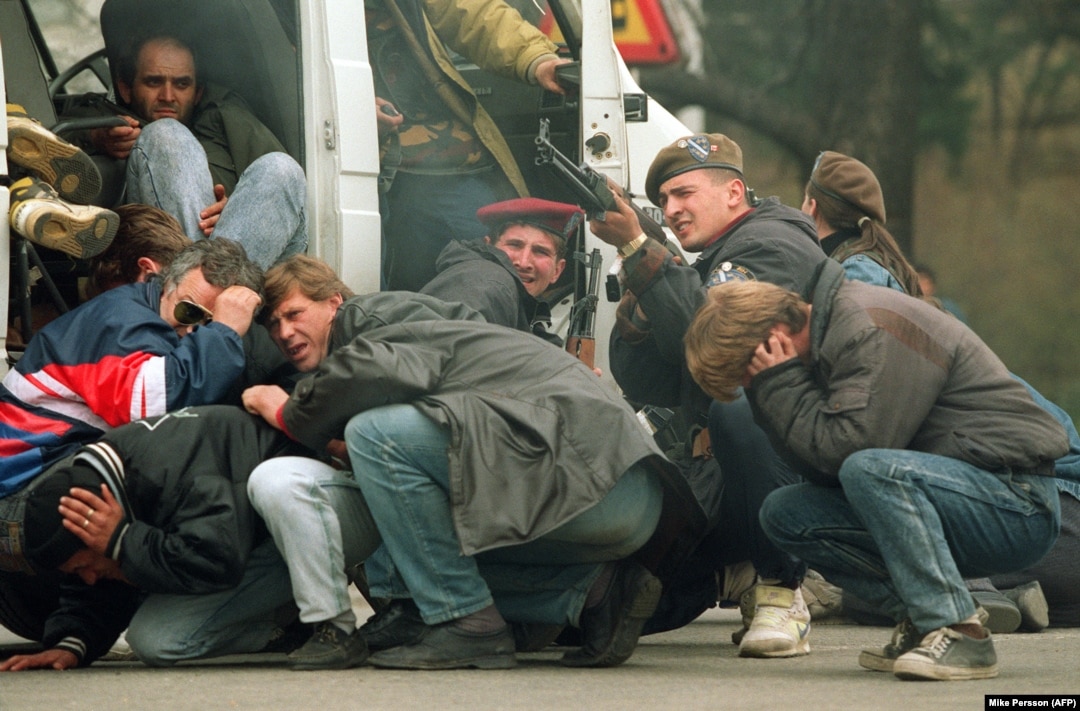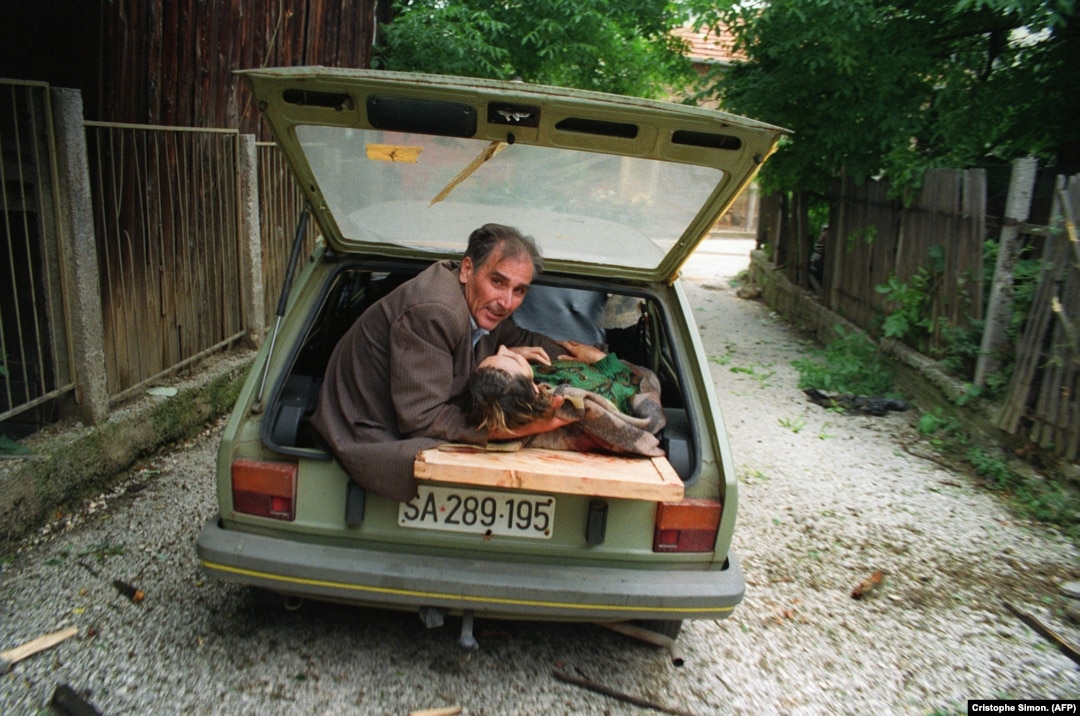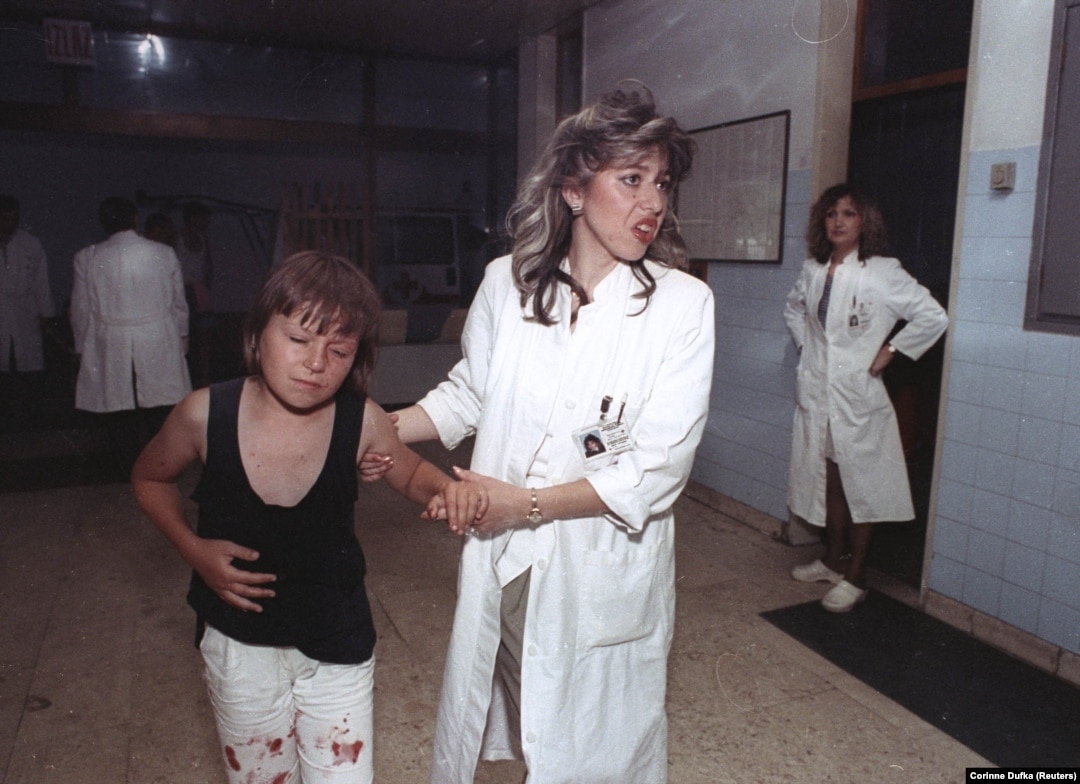The Siege Of Sarajevo

In an iconic picture that captures the opening moments of the siege, a Bosnian soldier takes aim to return fire after Serb gunmen shot into a crowd of peace demonstrators on April 6, 1992.

A tower burns in downtown Sarajevo on June 8, 1992, as paramilitary groups in the surrounding hills fire mortars and artillery down on the blockaded city.

A man cradles the head of a woman badly injured by shelling in Sarajevo on June 27, 1992.

An injured girl in a Sarajevo hospital on August 3, 1992. A United Nations report concluded that at the height of the siege, more than 3,000 shells were falling on the city each day.
A family cutting firewood nearly one year into the siege in the hills that surround the city, which together with surrounding areas had a population of around 525,000 before the blockade.
Bosnian Serb soldiers patrol a mountain road to prevent Bosnian troops from breaking through to Sarajevo on April 17, 1994.
A man calls for help for one of the casualties of a mortar explosion.
A man mourns his wife in one of Sarajevo's ever-expanding cemeteries in 1993.
Bosnian soldiers wave to a passing UN vehicle near Sarajevo airport on May 14, 1993. The UN airlift to the Bosnian capital, called Operation Provide Promise, lasted from July 1992 to January 1996, making it the longest-running humanitarian airlift in history.
A house burning in Sarajevo after a direct hit from a mortar in 1994. A UN commission concluded in 1994, with the siege still continuing, that property damage "includes specifically protected targets such as hospitals and medical complexes, medical facilities...medical personnel, as well as cultural property" and tens of thousands of apartments.
A young couple runs across the infamous Sniper Alley in Sarajevo in 1995. Snipers in the surrounding hills, combined with the relentless mortar rounds bursting on the streets, made even a trip to collect water a perilous task during the 44 months of the siege.
French cardinal Roger Etchegaray (left) and Bosnian cardinal Vinko Puljc in Sarajevo on August 15, 1995. Cardinal Etchegaray brought a message from Pope John Paul II of solidarity with Sarajevans.
Civilians injured by a mortar in Sarajevo's central market await treatment in a hospital corridor on February 5, 1994. The woman at left died before doctors could attend to her.
The scene after mortars slammed into the crowded Markale marketplace in central Sarajevo on August 28, 1995. Forty-three people died in this, the second of two deliberate attacks on the market that came to be known as the Markale Massacres. The August shelling was among the reasons cited for NATO's bombing of Bosnian Serb forces, which started later the same month.
A Serb woman sells goods in a market as a shop burns behind her in Ilidzia, a Serb-held suburb of Sarajevo on March 9, 1996, three days before it was due to come under Croat and Muslim rule.

